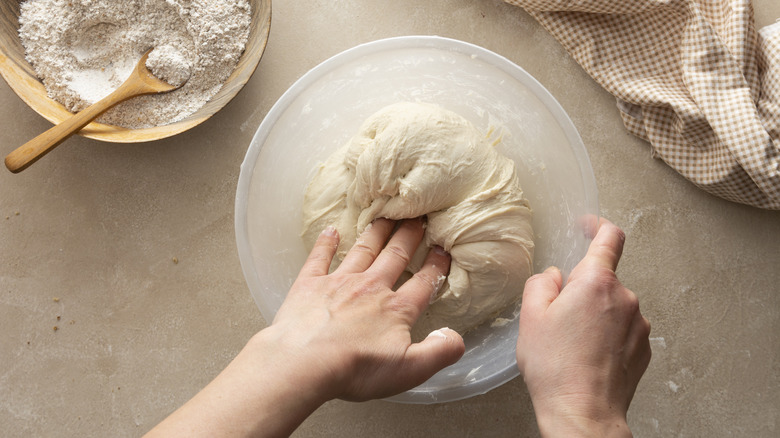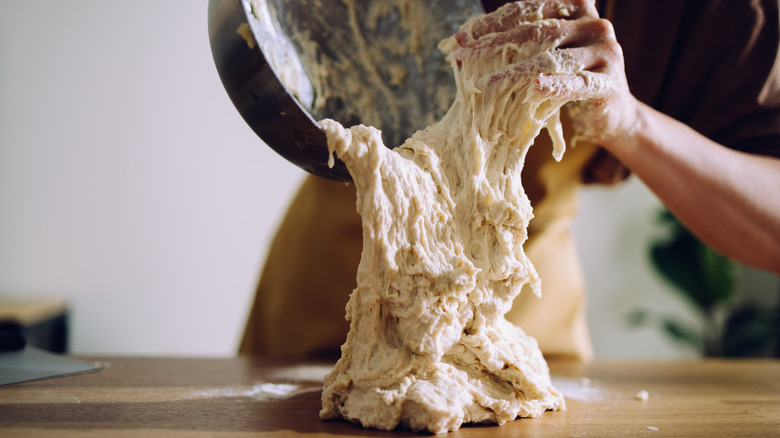Knead Wet Bread Dough In A Bowl Instead Of On The Counter For Better Results
Breadmaking has a lot of rules for many distinct steps in the process, and kneading is supposed to be the simple part. There are no precise measurements and no delicate shaping of the dough — you just get to squeeze and push until your dough has built up the strength of its gluten bonds. For those who make bread by hand it can even be a meditative experience, with 5 to 10 minutes of easy repetition serving as a physical but relaxing break from the world. But, that's only true when you aren't working with wet dough.
Bread recipes that have a high hydration level, like a baguette, can turn kneading into a frustrating process. Wet doughs cling to everything and makes it difficult to release your hands and press the uncooked bread with those simple, steady folds. That's where it can help to move off the counter and knead in a bowl.
Kneading wet dough in a bowl means less mess and sticking to surfaces. Bowls made out of plastic or stainless steel don't cling to wet dough the way many counter surfaces do. It's also helpful to grease the bowl with a drizzle of oil to make it even less sticky for your dough. Without all that sticking, you'll be able to stretch and pull your dough with far more ease, which will develop gluten bonds stronger and faster and lead to a better interior texture for the bread.
Additional benefits of kneading in a bowl
Using a bowl with wet dough also has a couple of other benefits that make kneading easier. Normally when kneading on a counter, flour is used to prevent the dough from sticking, but that can mess up the ingredient ratio of a wet dough. Wetting your hands intermittently instead will keep them from sticking to the dough and won't add too much moisture. It's not as effective on dough that is spread out all over the counter, but in a compact bowl where your hands will be the biggest source of stick, it's very useful. You also don't have to worry about extra water and flour running off and crusting up surfaces, since the bowl will catch everything. A bowl also makes it easy to rotate your dough around without touching it directly, which limits how much it will stick and will give you a more evenly distributed knead.
Once the dough is kneaded, you can even use the same greased bowl for the first bulk rise before shaping, so you're saving on dishes too. Just cover your bowl with plastic wrap or a wet towel and you're good to go. It's a small adjustment with something you certainly already have in your kitchen, but switching to a bowl for kneading wet dough can make your job a whole lot easier.

